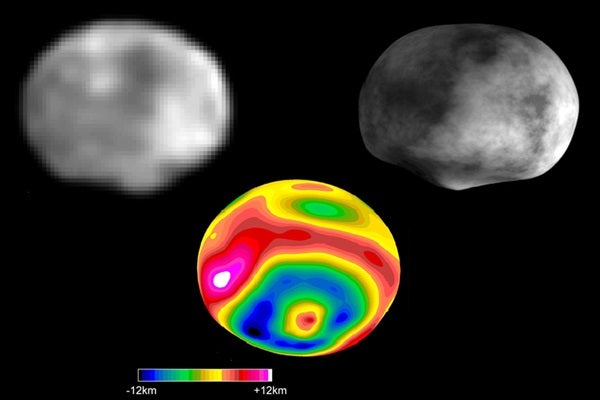The colors were chosen to highlight differences in surface composition that are too subtle for the human eye to see. Scientists are still analyzing what some of the colors mean for the composition of the surface, but it is clear that the orange material thrown out from some impact craters is different from the surrounding surface material. Green shows the relative abundance of iron. Parts of the huge impact basin known as Rheasilvia in Vesta’s southern hemisphere, for instance, have areas with less iron than nearby regions.
Dawn has imaged the majority of the surface of Vesta with the framing camera to provide this 3-D map. While some areas in the north were in shadow at the time the images were obtained, Dawn scientists expect to improve the coverage of Vesta’s northern hemisphere with additional observations. Dawn’s viewing geometry also prevented mapping of a portion of the mountain of the south pole.
The spacecraft is currently spiraling up from its lowest-altitude orbit into its final science orbit, where its average altitude will be about 420 miles (680 kilometers). Dawn is scheduled to leave Vesta around August 26.










